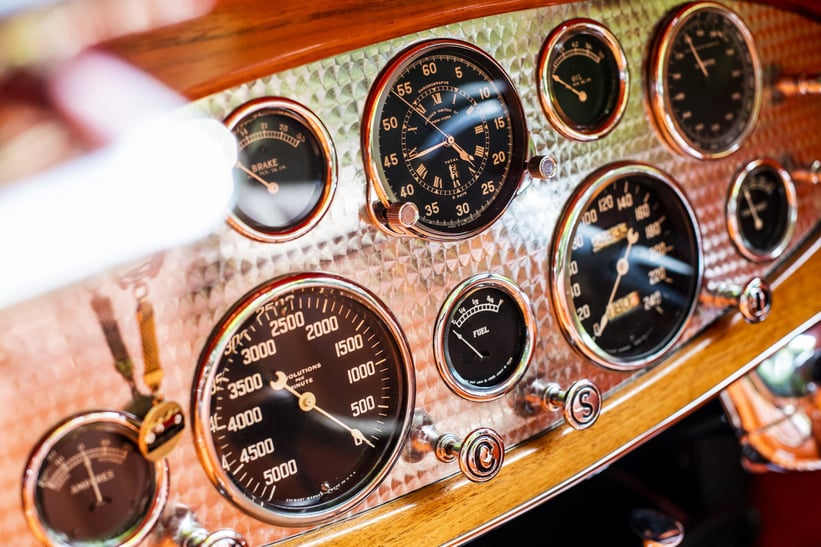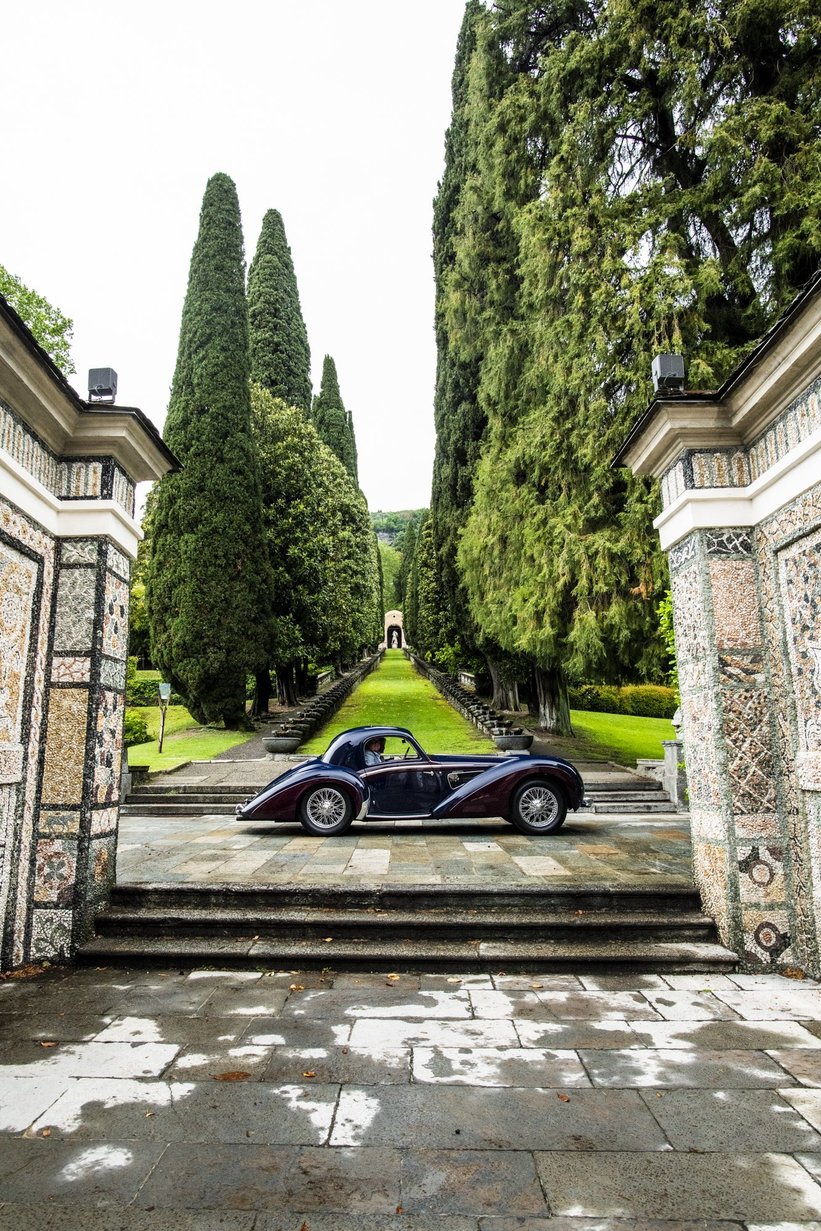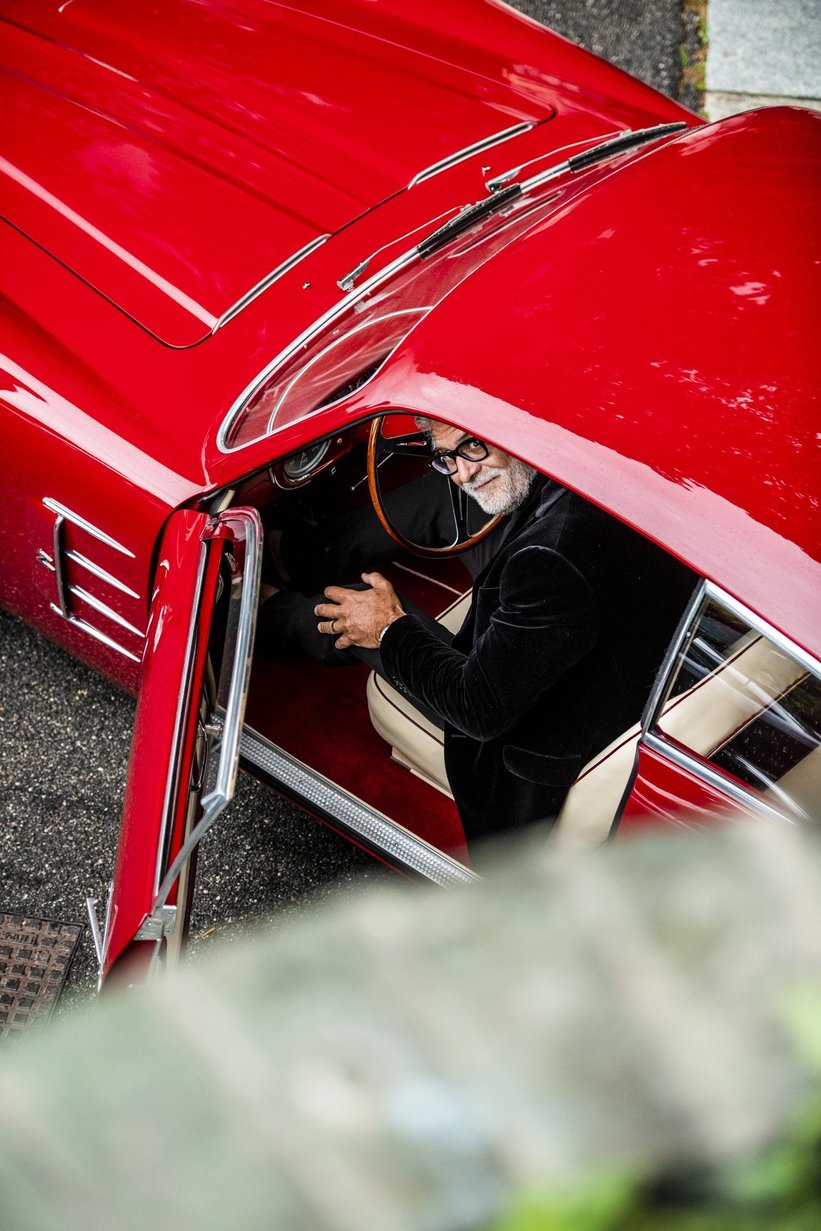

Come to Italy in late May, they said. It will be lovely, they said. While the weather gods speared us from pouring rain during the Prelude Tour, they had no mercy when the cars finally aligned on Saturday for the Concorso d’Eleganza Villa d’Este: Soaked to the metal, their precious, open interiors only protected by the Grand Hotel’s signature umbrellas, the cars and their owners braved the torrential rain, while a very wet Simon Kidston truly lived up to the daredevil spirit of his motor-racing ancestors while praising and waving the cars through their parade with the endurance of a Venetian gondoliere.

Despite the weather, the terrace was packed, with the concorso’s trademark, aperol-sipping hautevolée engulfed in drifting swaths of exhaust fumes and cigar smoke, while the show found its peak Tintin moment when the massive Grumman HU-16 Albatross mid-century seaplane (that Meyers Manx owner and collector had dispatched all the way from LA to Como) thundered across the grand hotel in a slightly frightening descend.



The participants of the Concorso d’Eleganza Villa d’Este have certainly pulled a show for the books – but what was even more impressive than the sheer spectacle was the choice of cars that outclassed many of the previous editions. The first class of cars that stood out was titled ‘The dazzling motoring indulgences of the mighty Maharajas”. And the name did not promise too much: There were four enormous Rolls-Royce – a Silver Ghost Open Tourer coachbuilt by Windovers and a red Silver Wraith Drophead Coupe, both shipped to Villa d’Este all the way from India, an equally impressive Allweather Tourer and blue-and-silver Sports Phantom Prototype Experimental with a boat tail matching the Rivas on the lake.


Still, the most impressive of the cars once commissioned by Indian royalty was the Duesenberg SJ Speedster designed by Gurney Nutting in 1935 for a 28-year-old Maharaja. With its bight orange interior and wicker steering wheel, the Boattail Speedster convinced the jury and claimed the Trofeo BMW Group, better known as “Best of Show”.


Another strong contender for the main trophy had been the 1938 Delahaye 145 Coupé from the world-class collection of Peter and Merle Mullin. The car began its life as a racing car, but history intervened and after the war, coachbuilder Henry Chapron used the chassis to create a breathtakingly elegant V12 coupé. The dark red and blue once belonged to the industrial Fritz Schlumpf from the Alsace before it founds its way to the US in 2003.



While the pre-war cars impressed with their boundless exuberance, the racing machines parked next to them stole the show with their aerodynamic silhouettes and roaring engines. Celebrating 100 years of the Le Mans 24 Hours, the selecting committee had lured a fantastic selection of endurance legends to Villa d’Este. The line-up spawned from a 1937 Peugeot 302 Darl’Mat Sport to an Aston Martin DB2 and a Mercedes-Benz Gullwing from the Rennabteilung that won Le Mans in 1952. Right next to it stood the overall winner of the 1960 race race, Ferrari 250 Testa Rossa driven to victory by Paul Frère and Olivier Gendebien.


The silver-metallic Ferrari 250 GTO with its iconic tricolore livery was ‘only’ ranked 4th in the 1962 race, but the mythical car –that is considered to be the best GTO of them all and that is owned by David MacNeil – could at least score a late triumph over the Testa Rossa by being the second most expensive car in the world. Did someone say 70 million dollars?


But that wasn’t the end of the Le Mans madness at Villa d’Este: The Gulf-sponsored Ford GT40 is the only racecar on the planet that ever scored two overall victories at the 24 hours of Le Mans – consecutively beating the competition in 1968 and 1969. Meanwhile, the Martini Racing Porsche 936/77 was famously driven to victory in 1977 by Jacky Ickx, Hurley Haywood and Jürgen Barth. It was an amazing sight to see the cars in action, although the terrace of the Villa d’Este is not the Hunaudière straight and spontaneous street races along the lake were not recommended by the jury. Still, the cars were able to engage in a competition for the wildest engine noise – and while the ultra-flat 1981 Ferrari 512 BB LM send shockwaves all across Lake Como, it was the amazing Martini & Rossi Porsche 917 K that in the end won the ‘Il Canto del Motore’ trophy for its Hans Mezger-composed turbo symphony.



The Kurzheck racer brought to Como by Count d’Ansembourg from Belgium was part of a special class celebrating the 75th anniversary of Porsche. And while cars from Zuffenhausen are usually a rare sight at Concorso d’Eleganza, they clearly dominated this year’s show. The Classic Driver team first lost its heart to the highly original, Lime Green Porsche 911 Carrera RS 2.7 from the Auriga Collection before it before falling for the 1963 Porsche 901 Prototyp nicknamed “Quick Blau” by the development team. Alois Ruf had received the car for his 18th birthday in 1968 and kept the car ever since. The prototype rightfully won its class. Besides the seaplane mentioned earlier, US collector Philip Sarofim had also brought a fantastic, Interscope-sponsored Porsche 935 to the show – a car that raced very successful in the IMSA series. Meanwhile, the Polar Silver 1998 Porsche 911 GT1 easily won the crown for the most impressive contemporary classic of the show.



The special classes with their spectacular cars made it slightly difficult to focus on the coachbuilt, often quirky but highly elegant automobiles that represent the Italian creativity and grandezza the Villa d’Este is famous for. While the House of Ghia’s impact on 1950s car design was represented by two sweeping American cruisers, a Cadillac Series 62 and a Chrysler GS-1 Special, we found the Lancia Florida Pinin Farina from the Lopresto Collection to be the most elegant 1950s coupé.


One of the most unusual cars of the concours was the pale blue 1950 Alfa Romeo 6C 2500 SS Berlinetta Riva “La Serenissima” designed by Count Giovanni Lurani Cernuschi, a flamboyant racing driver and journalist. Another unsung hero of Italian car design is the ATS 2500 GTS Berlinetta Allemano, a sportscar created by Carlo Chiti and Giotto Bizzarrini after they had parted ways with Enzo Ferrari. Penned by Franco Scaglione, only 12 of these mid-engined Berlinettas were built.


20th century Italian car culture is celebrated all over the world. And so it came as no surprise that many of the most iconic sportscars Made in Italy had covered vast distances before reaching their home turf: Eizo Tomita had shipped his lime green and golden Lamborghini Miura P400SV all the way from Japan, while his countryman Hidetomo Kimura had brought along his pale gold, Touring-bodied Maserati 3500 GT Coupé.


Meanwhile, Jonathan Segal from San Diego joined the pack in his remarkable Maserati A6G/54 Berlinetta Zagato. Still, the Coppa d’Oro trophy that is voted by public referendum was awarded to the Ferrari 250 GT Spyder California that was once owned by the French writer Françoise Sagan and shipped to the Concorso d’Eleganza from Hong Kong. Sagan once said: “Whisky, gambling and Ferraris are better than housework.” We couldn’t agree more!


There are many superlatives one can pick to describe this year’s Concorso d’Eleganza Villa d‘Este: The most varied, the most exciting, the loudest, the rainiest, the most crowded. But while we hurried from one spectacle to the next, camera and umbrella in hand to catch the most memorable moment, there was one rather inconspicuous-looking car we always came back to for having another look. It was the aubergine-metallic Citroën SM Espace Heuliez owned by Thierry Dehaeck from Belgium: The open-top coupé with its retractable, stainless-steel targa roof and bolder-than-bold green leather interior had already charmed us during the Preview Tour. In the end, it’s these unexpected encounters we cars we haven’t seen before that draw us back to the Concorso d’Eleganza Villa d‘Este every year. So please – keep it elegant, and keep it quirky!
Photos: Rémi Dargegen for Classic Driver




























































































